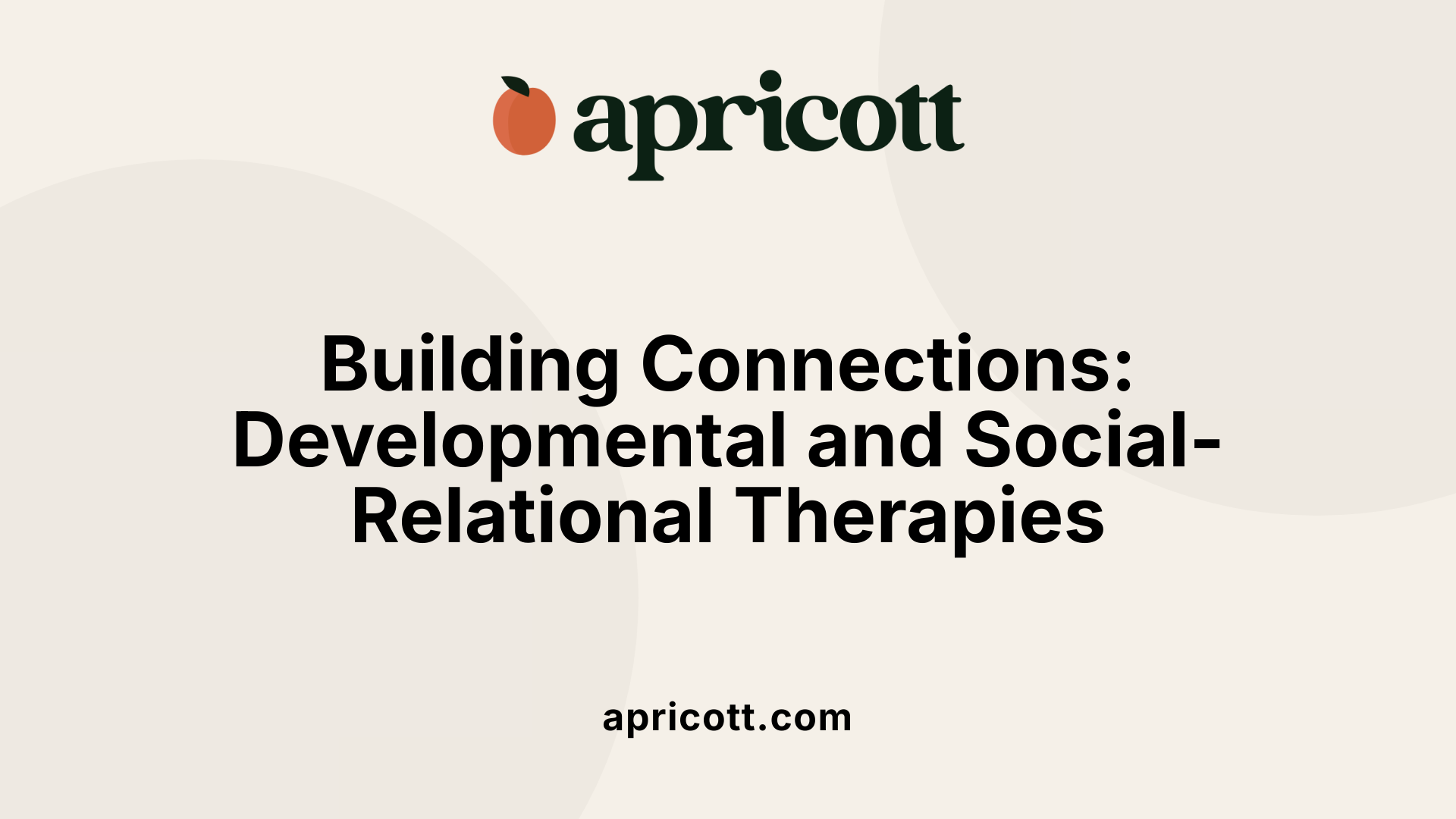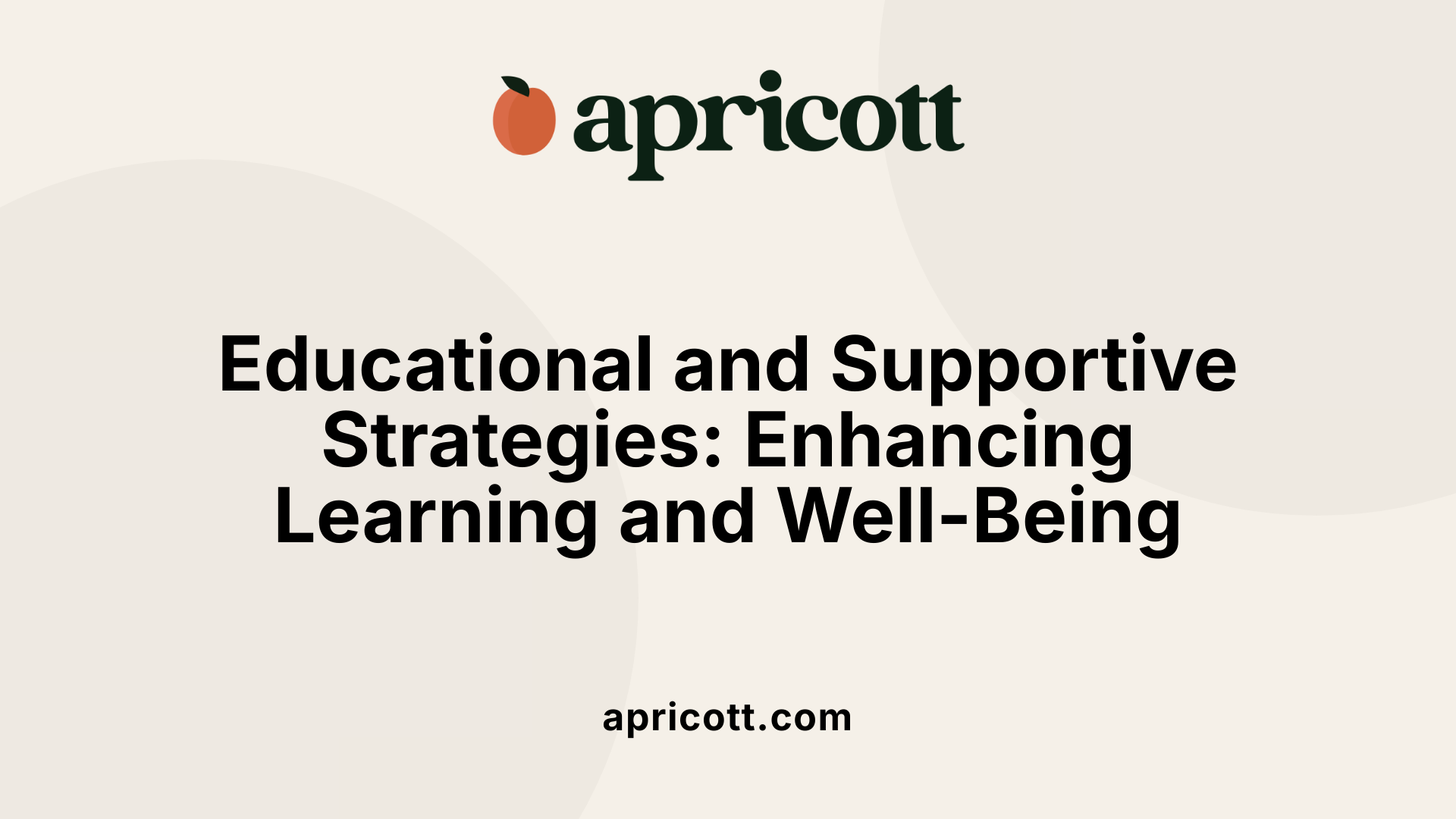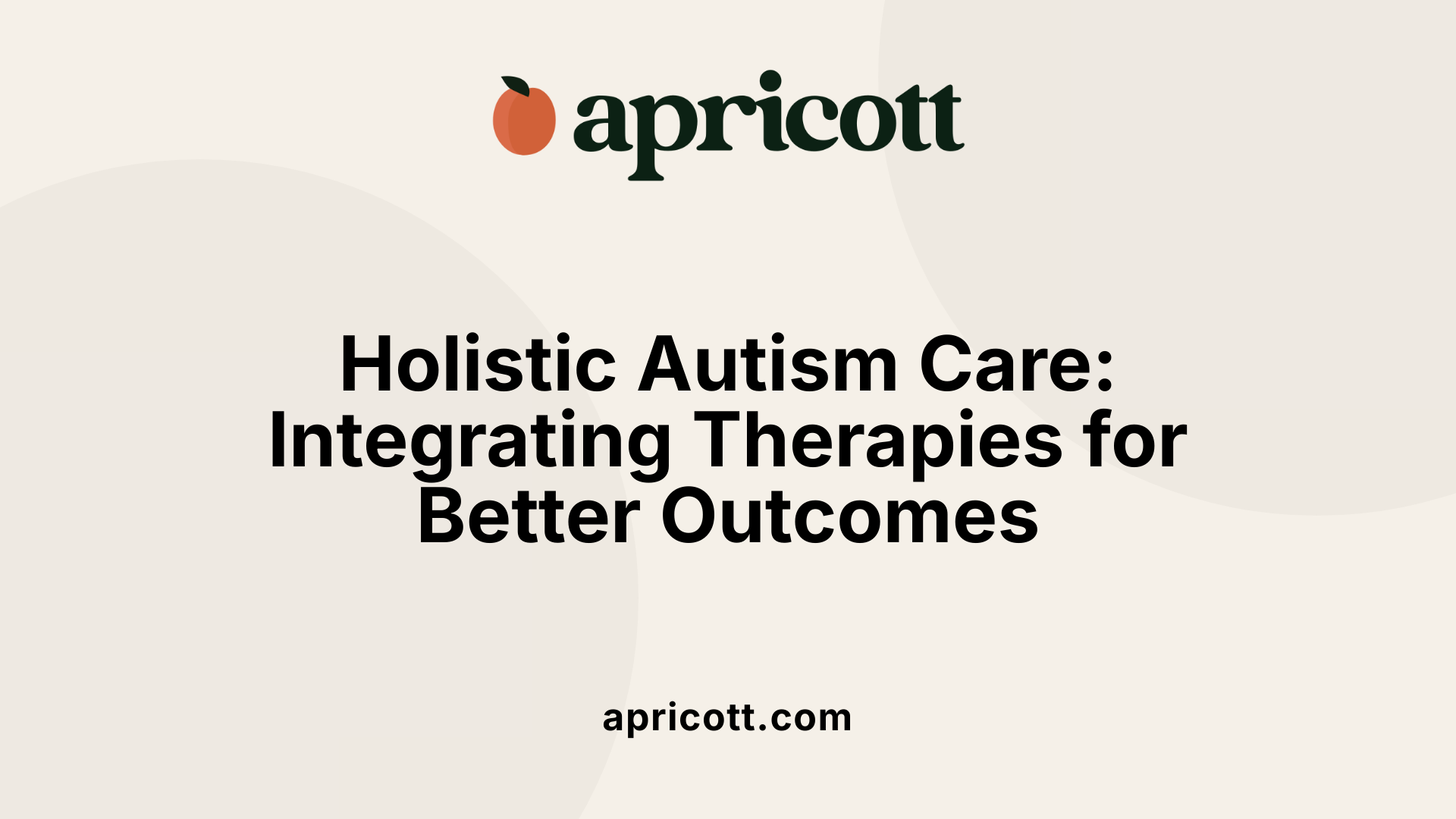December 2, 2025
Exploring Effective Therapeutic Approaches for Autism Spectrum Disorder
Autism spectrum disorder (ASD) is a complex developmental condition that affects communication, behavior, and social interaction. Fortunately, a variety of therapies tailored to individual needs exist to support those with autism in building essential skills and improving quality of life. This article explores the major types of therapies widely recognized and utilized, focusing on their approaches, benefits, and how they are integrated into treatment plans for autism.

Applied Behavior Analysis (ABA) therapy is a scientifically validated method used to support individuals with autism by improving socially important skills. It focuses on understanding behavior by analyzing the antecedents (what happens before), the behavior itself, and the consequences (what follows). ABA uses carefully planned techniques like positive reinforcement, prompts, and structured teaching to encourage desired behaviors while reducing challenging ones.
Two common ABA methods include Discrete Trial Training (DTT), which breaks down skills into small, clear steps taught with repetition and rewards, and Pivotal Response Treatment (PRT), a play-based technique that targets vital behaviors such as initiating communication, improving motivation and social engagement.
ABA therapy is personalized for each child. A Board Certified Behavior Analyst (BCBA) performs detailed assessments and sets specific goals tailored to the child’s needs. Therapy often involves one-on-one sessions multiple times per week, where therapists use data-driven approaches to measure progress and adjust plans as needed.
Typical sessions incorporate skill-building activities, behavior management strategies, and techniques to help generalize skills to natural settings like home or school. Family involvement and caregiver training are important components to reinforce skills outside of therapy sessions.
ABA therapy is delivered by trained professionals, including Board Certified Behavior Analysts (BCBAs) and supervised ABA therapists. Becoming a BCBA requires completing graduate-level training in applied behavior analysis, supervised practical experience, and passing a certification exam administered by the Behavior Analyst Certification Board (BACB). These experts design treatment plans, monitor progress, and supervise other therapists.
ABA providers work in clinics, schools, homes, and community environments to deliver consistent support. Their specialized training ensures that therapy is tailored, effective, and ethically managed.
ABA therapy offers significant benefits by improving communication, social skills, cognitive functioning, and daily living abilities. It has strong scientific backing as an effective intervention, especially when implemented early and intensively.
Children show gains in language development, attention, academic skills, and reduced challenging behaviors. ABA’s focus on reinforcement and individualized teaching helps learners build independence and participate more actively in social and community life.
Overall, ABA serves as a foundation for supporting children with autism, equipping them with essential skills for long-term growth and well-being.

Speech and language therapy plays a crucial role in helping children with autism spectrum disorder (ASD) develop both verbal and non-verbal communication skills. Therapists use techniques like alternative augmentative communication (AAC), which include tools such as picture exchange communication systems, gestures, and communication devices. These methods assist children in expressing their needs, feelings, and ideas, helping to reduce social isolation and enhance self-expression.
Occupational therapy (OT) helps children with autism acquire vital daily living skills such as eating, dressing, and grooming. In addition to promoting independence, OT often includes sensory integration therapy to address sensory processing challenges typical in ASD. Through motor skill development and sensory exercises, OT supports improved coordination, balance, and emotional regulation.
Social-relational treatments focus on strengthening social skills and emotional bonds through interactive play and relationship-building strategies. The Developmental, Individual Differences, Relationship-based model (DIR), commonly known as "Floor Time," encourages children to engage meaningfully with caregivers during play to foster communication and emotional connection. Relationship Development Intervention (RDI) emphasizes flexible thinking and coping with change while enhancing social understanding and family bonding.
Social skills training involves teaching children to interpret social cues, engage in conversations, and navigate social interactions effectively. This training may be delivered in group settings using role-play, modeling, and visual aids such as social stories, which describe social situations in a narrative form to prepare children for real-life interactions and reduce anxiety.
Parent-mediated programs empower caregivers by teaching them strategies to support their child's social and communication development. These approaches often incorporate techniques from behavioral and developmental therapies, helping parents facilitate attention, encourage peer interaction, and respond appropriately to their child's needs. Relationship-focused interventions, such as RDI, prioritize nurturing emotional bonds within families to promote social and psychological growth.
Together, these developmental and social-relational therapies form a comprehensive framework supporting communication, independence, and emotional well-being for individuals with autism.

The TEACCH (Treatment and Education of Autistic and Communication related handicapped Children) method is an educational approach delivered primarily in classroom settings. It emphasizes consistency, visual learning, and structured teaching methods to support individuals with autism. Key elements include the use of visual schedules, physical boundaries, and clear routines that help learners anticipate daily activities and reduce anxiety. This structured environment enables students with ASD to navigate learning tasks more independently and effectively.
Early intervention is crucial for children with autism, especially before the age of three, due to the brain's heightened plasticity at this stage. One notable developmental therapy is the Early Start Denver Model (ESDM), which combines behavioral and developmental principles. ESDM is a naturalistic developmental behavioral intervention (NDBI) that uses play-based, child-led learning to foster social, emotional, cognitive, and language skills. It can be carried out in clinics, homes, or community settings and actively involves parents and caregivers, making it a comprehensive early intervention program backed by research.
Complementary and alternative therapies are sometimes incorporated alongside standard autism treatments to enhance overall well-being. These include animal-assisted therapy, which utilizes interaction with animals to promote social interaction and reduce anxiety; mindfulness practices that focus on relaxation and emotional regulation; and dietary supplements or special diets aiming to improve physical health or reduce symptoms. It is important to consult healthcare providers prior to starting any complementary therapies to ensure safety and appropriateness.
Educational systems play a vital role in providing autism-related therapies, often at no cost under federal and state laws such as the Individuals with Disabilities Education Act (IDEA). Services like speech therapy, occupational therapy, and specialized autism interventions are available through schools and early childhood programs. Community organizations further support families by offering resources, parent training, and sometimes direct therapy services. Access typically involves evaluations and paperwork but provides families with multiple avenues to obtain needed support for their children.
| Approach | Setting | Focus and Techniques |
|---|---|---|
| TEACCH Method | Classroom | Visual supports, structured teaching, consistency |
| Early Start Denver Model | Clinic, Home, Community | Early, naturalistic behavioral intervention, family involvement |
| Animal-Assisted Therapy | Various | Interaction with animals to aid social skills and reduce anxiety |
| Mindfulness Practices | Flexible | Relaxation, emotional regulation |
| Dietary Supplements & Diets | Home | Adjunctive physical health support; requires medical oversight |
| Educational Systems & Community | Schools, Centers | Therapy access under IDEA; speech, occupational, and autism-specific therapies |

CBT is a form of talk therapy that supports children and adults with autism in managing anxiety and other mental health issues. It works by helping individuals identify and change thought patterns that lead to problematic feelings or behaviors. CBT is tailored to each person’s needs and involves ongoing adjustments to best address their unique challenges.
While there are no medications for the core symptoms of autism spectrum disorder, pharmacological treatments can help manage associated conditions such as hyperactivity, anxiety, depression, seizures, sleep disturbances, and gastrointestinal problems. These medications target specific symptoms to improve overall functioning and quality of life.
Due to potential side effects and the complex nature of co-occurring symptoms, it is crucial to work with experienced healthcare professionals when considering or managing medication. Ongoing medical supervision ensures monitoring of effectiveness, adjustments to dosages, and early detection of adverse reactions.
Mental health support through CBT and medication complements behavioral and developmental therapies like Applied Behavior Analysis (ABA), speech therapy, and occupational therapy. Addressing anxiety, mood disorders, or seizures helps individuals better engage in core autism treatments, leading to more holistic care and improved outcomes.

A comprehensive approach to autism therapy often includes a blend of Applied Behavior Analysis (ABA), speech-language therapy, occupational therapy (OT), and social skills training. ABA focuses on behavior management and skill-building through positive reinforcement. Speech therapy improves communication abilities via verbal and alternative communication methods. OT supports daily living skills and addresses sensory and motor challenges. Social skills training helps children navigate relationships and social cues using group settings and role play.
Parent training programs empower caregivers with practical strategies to reinforce learning at home. Techniques may include prompting attention, offering choices, and encouraging peer interactions. Family involvement strengthens consistency across environments and supports emotional bonding, increasing therapy effectiveness.
Therapy plans are personalized to each child's developmental level, strengths, and challenges. For example, early intensive behavioral interventions like the Early Start Denver Model (ESDM) provide targeted support for children under 4 years old, while programs such as Relationship Development Intervention (RDI) focus on enhancing social thinking and flexibility in older children.
Early intervention, particularly before age 3, takes advantage of brain plasticity to yield optimal long-term gains. Intensive ABA-based programs, combined with speech and occupational therapies, substantially improve language, social skills, and independence.
Families can access autism therapies through various channels including educational systems under the Individuals with Disabilities Education Act (IDEA), health insurance, and community organizations. This often requires evaluations, paperwork, and understanding available resources. Coordinated navigation with healthcare providers and educators is crucial to secure timely and comprehensive care.
Addressing the diverse needs of individuals with autism requires a comprehensive understanding of the various therapeutic options available. From highly structured behavioral interventions like ABA to developmental, educational, and psychological therapies, each approach plays a crucial role in enhancing communication, social skills, independence, and emotional well-being. Coordinated care involving trained professionals, families, and community resources helps ensure therapies are tailored effectively to the unique profile of each person. Early intervention remains critical, but ongoing support and multidisciplinary collaboration contribute to meaningful long-term gains. Through informed choices and access to evidence-based treatments, individuals with autism can lead fuller, more connected lives.